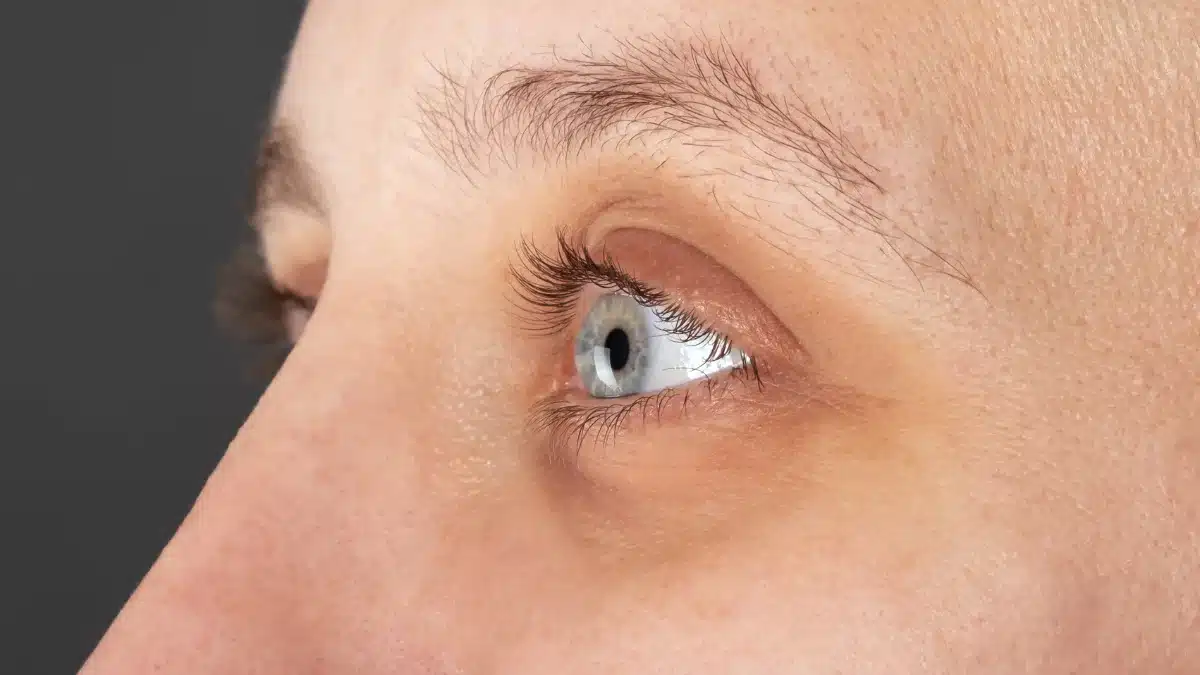Keratoconus, although a rare eye condition, can affect one’s vision significantly and be a cause of concern.
In Keratoconus, the cornea of a person slowly becomes cone-shaped due to the thinning of the cornea because of aging.
Some people may also experience this condition due to eye allergies.
Since Keratoconus vision can be a cause of concern, it is natural to learn about its types and their causes.
Understanding the causes of Keratoconus vision is important to know about its treatments.
This article will discuss all about Keratoconus vision in detail, including its treatments.
What is Keratoconus Vision
Keratoconus vision is usually progressive in nature and affects the cornea, which is the clear, dome-shaped tissue that covers the front of the eye.
When the cornea becomes thin with age, it bulges out, which changes its shape to a cone.
The symptoms of Keratoconus affect a person in both of the eyes.
The types of vision with Keratoconus may differ for every person, depending on the severity of the condition.
While some people may experience Keratoconus blurry vision, others might notice double vision Keratoconus.
Apart from these above-mentioned mild Keratoconus vision problems, some people may have problems with night vision.
Keratoconus night vision may result in sensitivity to light or glare and can create problems while driving at night.
Causes of Keratoconus Vision
 Source: fixkes
Source: fixkesAlthough the exact cause of Keratoconus vision is unclear, there are several factors that can result in its development.
Sometimes, individuals may experience this condition due to genetics, and it is passed down in families.
One out of every ten people with Keratoconus has a parent who has the same condition.
According to research, eye allergies are also one of the factors that cause Keratoconus in a person.
The eye rubbing due to allergic reactions or eye strain may also result in advanced Keratoconus vision.
Another study shows that people with connective tissue disorders like Marfan Syndrome and Ehlers-Danlos Syndrome may develop Keratoconus vision.
Ehlers-Danlos Syndrome is a group of genetic disorders that can cause joint hypermobility, skin fragility, and vascular fragility.
Diagnosis of Keratoconus Vision
The diagnosis of Keratoconus vision requires comprehensive and detailed eye examinations.
A study shows doctors use eye examination methods like corneal topography and tomography.
In some cases, they may also use Biomicroscopic (slit-lamp) evaluation for the diagnosis.
These evaluation methods can help in evaluating the measurement of corneal thickness, assessment of corneal curvature, and mapping the cornea’s surface.
These assessment methods help the doctors understand if there is any change in the corneal shape.
Keratoconus Vision Improvement Techniques
 Source: FabrikaCR_from_Getty_Images
Source: FabrikaCR_from_Getty_ImagesDoctors may suggest using eyeglasses or contact lenses to correct the blurry or distorted vision due to Keratoconus.
This method only helps in the Keratoconus vision improvement at the initial stage.
Another research states that doctors may suggest using Intrastromal Ring Segments, commonly known as intacs. This device helps flatten the cornea and maintain its shape.
The experts may sometimes also suggest using Intracorneal Ring Segments.
In some cases, using the corneal collagen cross-linking method can strengthen the corneal tissue.
It is an FDA-approved method and can help in reducing the progression of the condition.
In the cases of advanced Keratoconus vision, doctors may suggest corneal transplantation to protect one’s vision.
If you want to learn more about the treatments for Keratoconus vision, read A Comprehensive Guide to Keratoconus Treatment.
Conclusion
Keratoconus vision is a rare eye condition that affects one’s cornea and produces symptoms like blurry or distorted vision, double vision, and problems with night vision.
Individuals may experience this condition due to factors such as eye allergies, eye rubbing, and genetics.
Doctors often use techniques like corneal topography, tomography, and slit-lamp tests to diagnose.
At the initial stage of treatment, using eyeglasses and contact lenses may prove to be beneficial.
However, in the advanced Keratoconus stage, treatments like using intacs, corneal collagen cross-linking, and corneal transplant may be effective.
It is always best to consult your doctor for the most suitable advice depending on your condition.

Frequently Asked Questions
How to improve night vision with Keratoconus?
Improving night vision with Keratoconus usually involves using specialized lenses like scleral or RGP lenses to fix the irregular corneal shapes and to reduce glare and halos. One can also minimize bright lights and use adequate lighting to improve Keratoconus night vision.
Is advanced Keratoconus vision serious?
Yes, advanced Keratoconus vision can be serious and can result in significant visual impairment. It may cause distorted and blurry vision, increased nearsightedness (Myopia), irregular corneal shape, and thinning of the cornea.
Can you prevent Keratoconus vision?
No, you cannot prevent Keratoconus vision. However, avoiding eye rubbing and using sunglasses can help you in slowing the progression of this condition.
Why does Keratoconus affect a person’s vision?
Keratoconus changes the shape of the cornea, causing it to become thin and bulge into a cone-like form. This irregularity disrupts the normal refraction of light that is entering the eye, resulting in blurred vision, distorted images, and affecting one’s overall visual acuity.
How does Keratoconus vision impact daily life and activities?
Keratoconus vision affects one’s daily life since it causes distorted, double, and blurry vision. This can prevent a person from reading, driving, or recognizing faces.
Cheap Medicine Shop only refers to credible, authoritative sources for our content. If you’re curious about how we ensure the integrity of our content, we encourage you to read our Content Information Policy.













